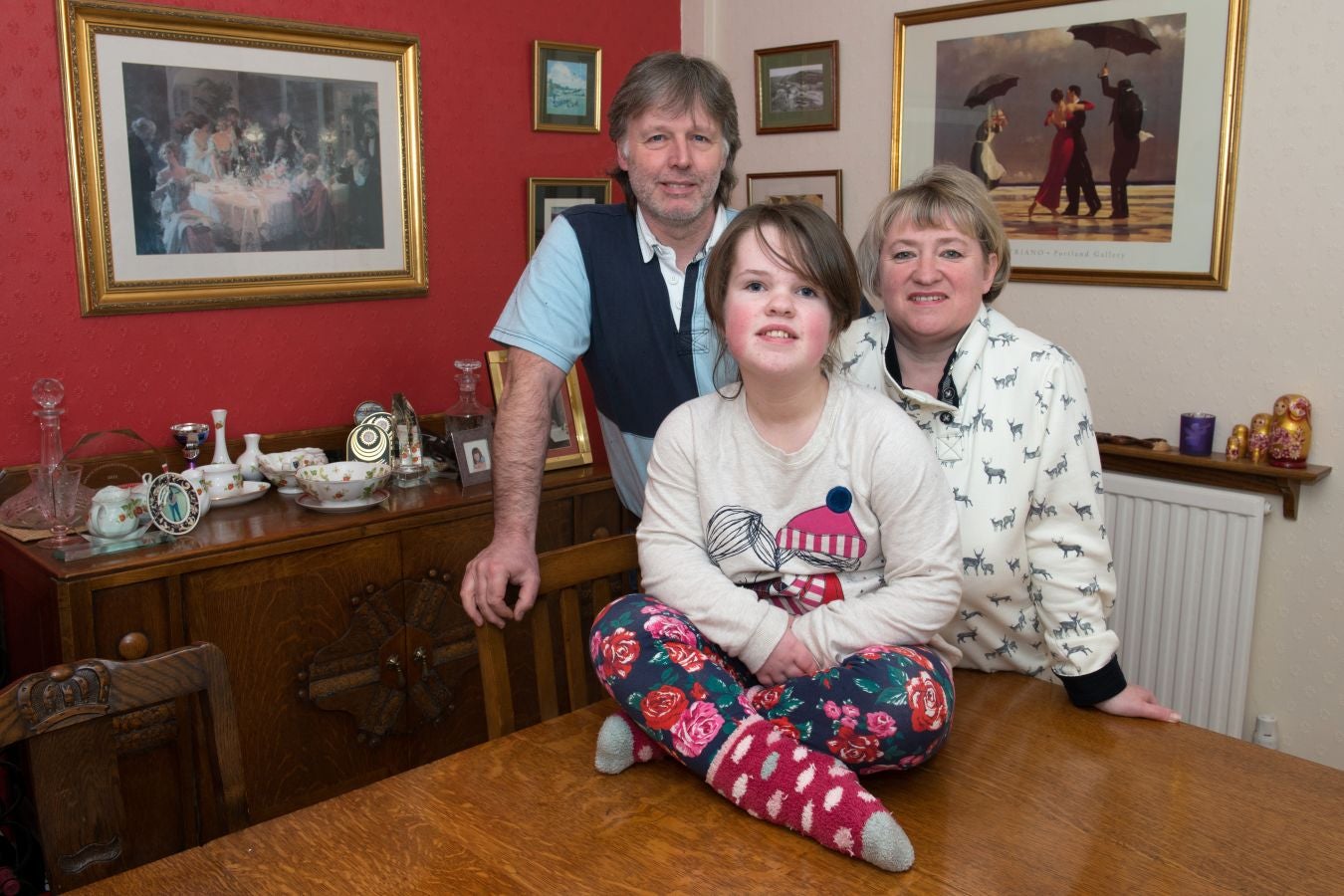How GOSH gave a girl with dwarfism a new lease of life
During the most intensive phase of Robyn Fellow’s treatment her parents were bringing her to GOSH from South Wales every two weeks, covering as much as 70,000 miles

Your support helps us to tell the story
From reproductive rights to climate change to Big Tech, The Independent is on the ground when the story is developing. Whether it's investigating the financials of Elon Musk's pro-Trump PAC or producing our latest documentary, 'The A Word', which shines a light on the American women fighting for reproductive rights, we know how important it is to parse out the facts from the messaging.
At such a critical moment in US history, we need reporters on the ground. Your donation allows us to keep sending journalists to speak to both sides of the story.
The Independent is trusted by Americans across the entire political spectrum. And unlike many other quality news outlets, we choose not to lock Americans out of our reporting and analysis with paywalls. We believe quality journalism should be available to everyone, paid for by those who can afford it.
Your support makes all the difference.For many years Jane and Simon Fellows didn’t measure their daughter Robyn’s height. She was born with achondroplasia, which means her limbs are out of proportion with the rest of her body. People used to stare at Robyn, now a chatty and active teenager, in supermarkets.
The condition, which is the most common form of dwarfism and affects about one in 25,000 people, will be with Robyn, 13, her whole life and could leave her with spinal problems when she gets older, but doctors at Great Ormond Street Hospital (GOSH) were able to offer a series of operations to straighten and lengthen her limbs.
For the family, who live in South Wales, this meant spending the best part of a decade shuttling up and down the M4 to London as Robyn faced major operations at ages five, six, eight, nine and 10. Each operation came with a month of physiotherapy, meaning more long drives from the family home near Haverfordwest in Pembrokeshire to GOSH in London.
“For us it was a straightforward decision to have the surgery. If you look at her now, a happy, active girl, you know it was the right thing to do. It was a treadmill of operations and the worst part of it was taking a healthy child into hospital and making them ill. But we made the right decision,” said Jane.
“We decided that we would do everything in our power so she would not have to put up with society’s prejudice.”
Robyn needed 12 specialist operations and these involved breaking her legs and holding the bone apart with special frames. Over time, the bone grew in the gap but Robyn needed constant, often painful, physiotherapy.
In total, she gained nine inches, but the treatment wasn’t just cosmetic. Before the operations she had severe back pain and bowing legs. “It has completely transformed her quality of life and what she can do. We’d do it all again tomorrow,” said Jane.
Like Robyn, more than half of the patients treated at GOSH don’t live in London but need to travel there for the specialist treatment it offers in more than 50 fields of paediatric medicine.
“Our best buy was a DVD player for the car,” said Simon. “We would drive up, often leaving at 3am, to make an afternoon appointment.”
During the most intensive phase of her treatment, Robyn’s parents were bringing her to GOSH every two weeks, covering as much as 70,000 miles during 12 rounds of surgery, check-ups and consultant appointments.
Charity-funded accommodation and other support services offered at the hospital, and supported by the Independent’s Give to GOSH appeal, were vital. Simon added: “The hardest thing is that Robyn needed this treatment but missed so much of what her friends were doing. But the charity at GOSH was fantastic, there was always something arranged – whether it was a treat from her play specialist or a trip to watch X Factor.”
It’s been a year since Robyn’s treatment ended and the family still speak warmly about their time at GOSH. “Our heart is at GOSH,” said Jane, who drew strength from spending time with GOSH’s senior chaplain Jim Linthicum. “I went down to the chapel every time Robyn was in surgery. It gave me a chance to reflect.”
That reflection has continued back in Wales where Robyn’s parents say they let their daughter “find her own limitations” as she still can’t walk long distances and occasionally needs a wheelchair, though she will “jump up” in a shop when she sees a dress she likes. She already has professional ambitions too.
“I want to be a veterinary anaesthetist when I’m older,” said Robyn. “I think it’s because I had general anaesthetic so many times at GOSH.”
To Give to GOSH go to: http://ind.pn/1Mydxqt
To find out more about our appeal and why we're supporting GOSH go to: http://ind.pn/1MycZkr
Join our commenting forum
Join thought-provoking conversations, follow other Independent readers and see their replies
Comments